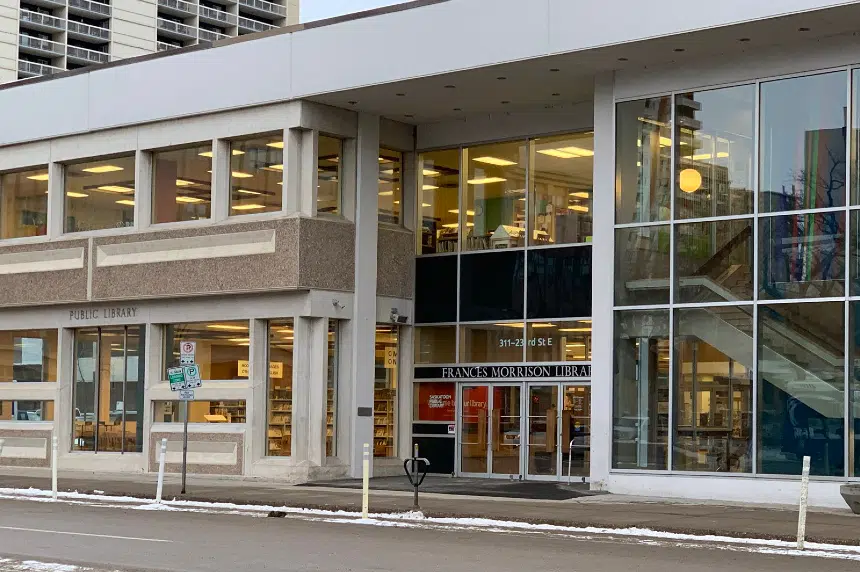Two library branches in Saskatoon recently moved to contactless service after instances of both physical and verbal abuse against patrons and staff.
“We do know that there have been incidents of patron harassment and fighting,” said Rhonda Heisler, a CUPE national representative for Local 2669, which represents library workers.
Heisler said fights have happened between patrons, but library workers also have been targeted.
“There seems to have been an increased number of incidents that have occurred recently,” Heisler said.
Physical and verbal abuse is something library workers have faced for the past number of years, Heisler said, and it has been heightened by the COVID-19 pandemic. She said a library staff member being harassed is not new, but a “regular development.”
“Our members in the library work in public service,” Heisler explained. “They do face a pretty significant degree of verbal abuse and racism and all kinds of different harassing behaviours.”
She said the move to contactless service for the Frances Morrison Central and Dr. Freda Ahenakew libraries in Saskatoon on Feb. 16 was a temporary change. She said Saskatoon Public Libraries stated the closures were to help adjust its service levels during the pandemic.
“Hold pickups, grab-and-go bags, faxing, scanning and printing services will be available. Rapid test kits will also be available for pickup,” a statement by the Saskatoon Public Library on their website reads.
“We are pausing in-library services at these locations while we make operational changes that support our goal to provide a safe, harassment-free environment for our patrons and employees.”
Heisler said the instances of abuse likely contributed to the move, too.
She noted she heard about one incident where a staff member was “punched in the face” after the employee had asked someone to put on or pull up their mask.
“That was traumatizing for everybody,” Heisler said, noting there have been other instances as well.
Saskatoon Public Libraries also referenced this event in a more in-depth statement shared on Friday.
In that statement, the library said the move to contactless services was to “proactively address complex issues that have been escalating over the past few weeks,” and the decision was made “in support of providing a safe, harassment-free environment for all patrons and employees.”
The statement said the library seeks to be a welcoming refuge, but the library itself is limited in dealing with the complex social, mental health and physical health issues it encounters.
The statement said incidents involving physical contact between the public and employees are “rare,” and the temporary change at the two library branches in Saskatoon became necessary after employees became “targets of increased and inappropriate verbal threats and harassment.”
The library also noted greater frequency and higher severity of events between members of the public in recent weeks.
Citing media reports of some specific incidents that involved library employees, the statement outlined facts of two incidents. In one, an employee was grabbed from behind in an adjacent parking lot in 2021 during the day. The employee was not physically harmed and reportedly did not file a report with police.
But as much as the isolation of the COVID pandemic may have contributed to violence against staff, Heisler also noted there are fewer social services available to people who need them, making libraries a substitute for social need.
“There’s fewer and fewer places downtown for people to congregate,” she said.
With libraries offering shelter and warmth as well as other resources, they offer a positive and useful environment to many looking to get out of the elements for a time.
Though the contactless services being offered until the end of the month are a temporary measure, Heisler noted what is really needed is “some stable and long-term funding by this government to ensure the libraries that … basically are required to pick up the slack of social services and mental health services.”
She said stable funding for more social services workers and community workers in the branches where the need is highest could help assist people and approach a complex socioeconomic problem with a viable long-term solution “so these people who have been left behind have someplace to go.”







